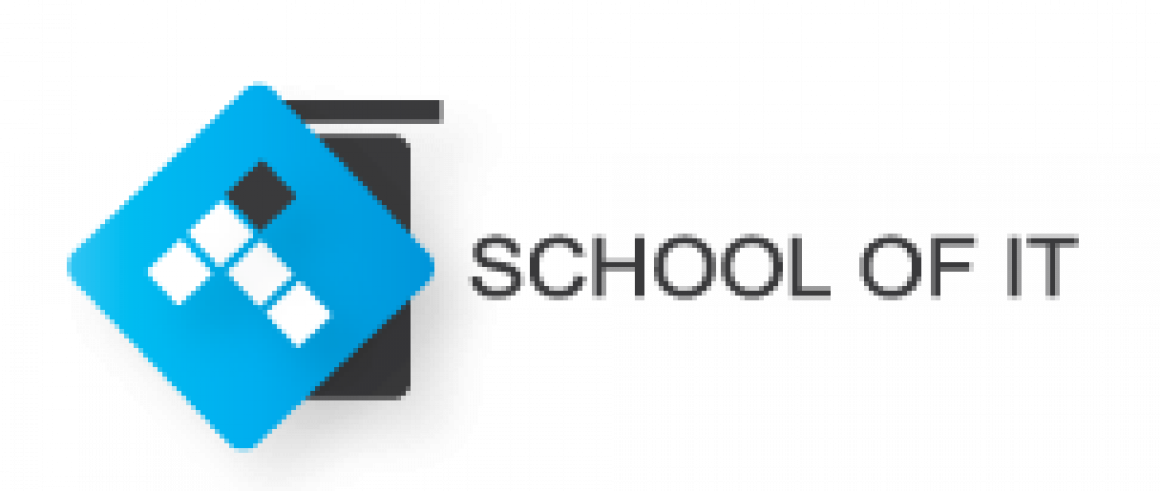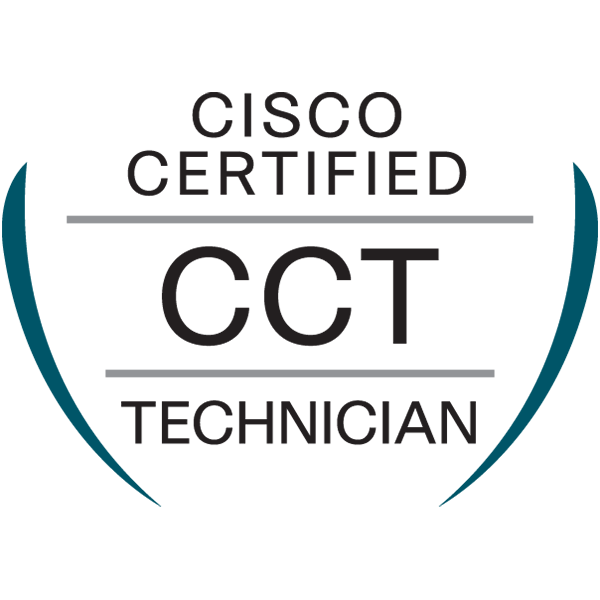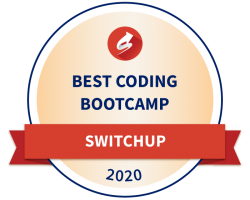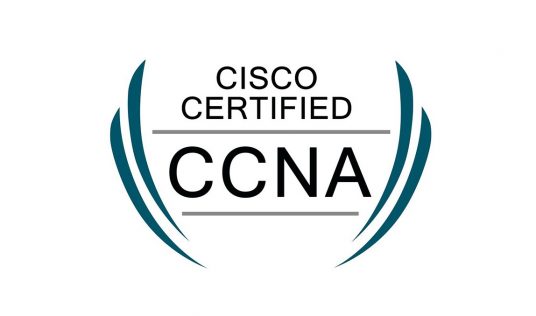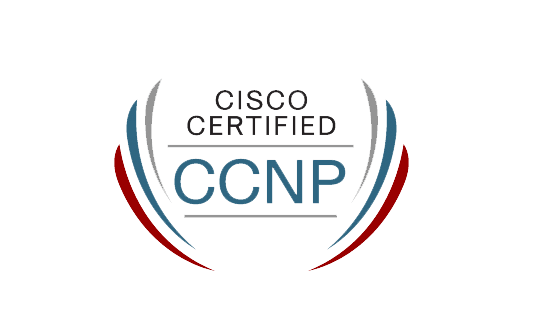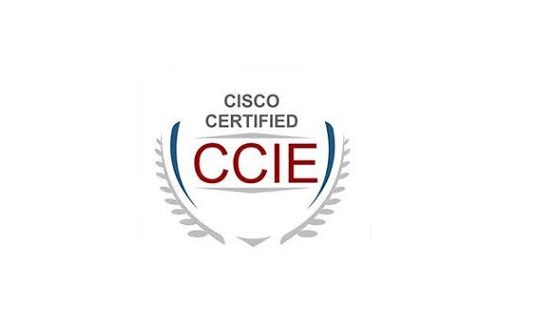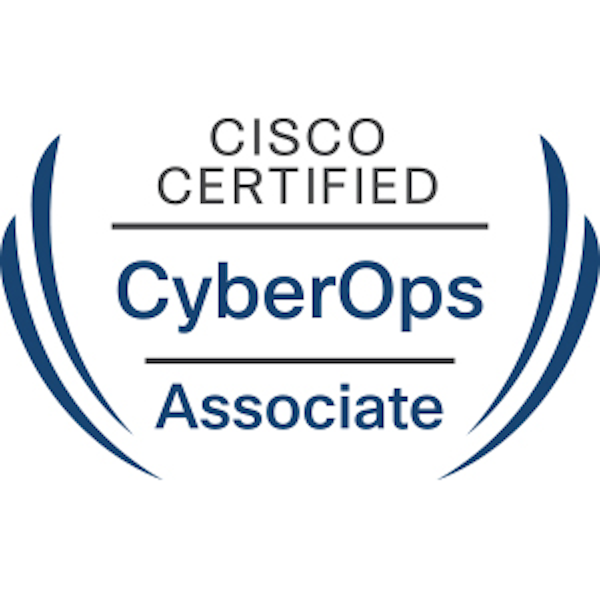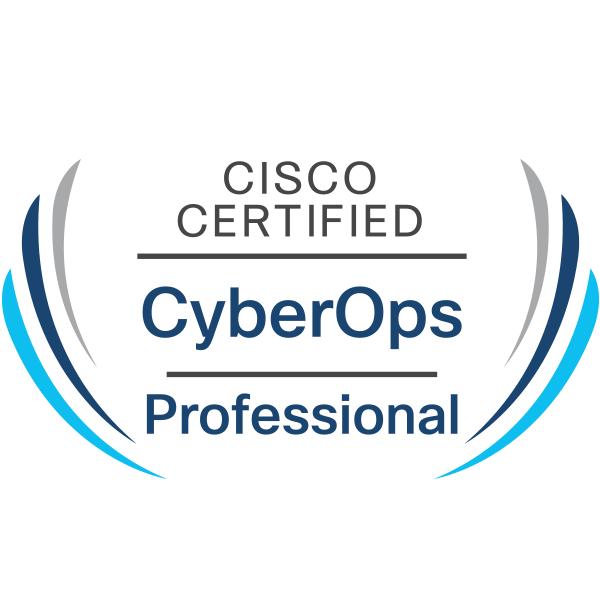Cisco Certified Technician (CCT) Course
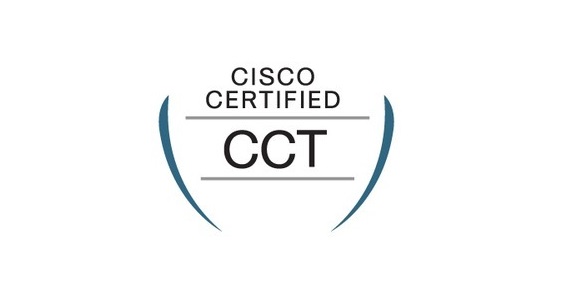
Cisco Certified Technician (CCT) Course
July 13, 2024 Comments Off on Cisco Certified Technician (CCT) Course
Get Internationally Accredited & Recognized
Cisco Certified Technician (CCT) Course
Questions to ask yourself about the Cisco Courses.
What is Cisco?
– CCNA has grown to be the world’s most desired IT certification. Since its inception in 1998 CCNA. Thus In total, 85% of the internet’s traffic travels via Cisco systems, making it the largest networking system in the world! All in all Cisco Systems is a global tech multi-industry company, which designs and manufactures networking equipment. Furthermore Cisco’s advanced networking solutions connect computer networks, computing devices and people.
Are the CCT courses in demand?
– In its 2018 Technology Salary Guide, Robert Half Technology lists CCNA Routing and Switching certification as one of the most sort after certifications, The guide adds that employers may have a an increase in salary of 10 percent.
Can I get internationally accredited and recognized (Cisco Certification) –
There are five certification levels within the Cisco Certification: The Cisco Certified Technician (CCT) Course is the entry level one:
Why Cisco Certified Technician (CCT)?
Who should attend the Cisco Certified Technician (CCT) Course?
Anyone can attend CCNA Training (Cisco Certified Network Associate), but there are several CCNA courses, other networking modules include; CCNA security and CCNA wireless. The CCNA certificate would help you switch from your existing job to a better paying and more challenging networking job. In turn to earn the Cisco Certificate, students must pass a closed-book exam/s.
Part-Time
Fast forward your career in the IT industry with a part-time course at School of IT. In turn Part-time courses allow Cisco professionals to transition into a new skill set while you work. Moreover at School of IT we are agile and customize a course to the individual.
Full Time
Ready to start a career in IT? Use the Cisco Architecture as a full time student at School of IT. Thus begin your career in best IT practices and IT networks.
High School
Learn about the networking and best practices, prepare for the future while you’re still in high school. Thus no matter where you are, we come to you! Thus it gives you the analytical skills to pursue your dreams!
Corporate
Learn about Cisco networks and up skill yourself or your company while you work. Thus no matter where you are, we come to you and give the networking tools to move up in your company.
Course Objectives for 100-890 CLTECH: Supporting Cisco Collaboration System Devices (CLTECH) v1.0.
After taking this course, you should be able to:
- Review Cisco data center networking fundamentals, including SAN, unshielded twisted-pair (UTP) and fiber connectors, the unified computing fabric, and server options
- Identify Cisco Unified Computing System (Cisco UCS) component models, Cisco Nexus and MDS switches, accessories, cabling, and interfaces
- Understand Cisco UCS and Cisco Nexus Operating System (Cisco NX-OS) operating modes and identify commonly found software
- Use the Cisco GUI to connect and service Cisco UCS product components.
- Demonstrate effective field servicing and equipment replacement, and how to troubleshoot most common issues with Cisco UCS servers
Course Objectives for 010-151 DCTECH: Supporting Cisco Data Center System Devices (DCTECH) v3.0
After taking this course, you should be able to:
- Review Cisco data center networking fundamentals, including SAN, unshielded twisted-pair (UTP) and fiber connectors, the unified computing fabric, and server options
- Identify Cisco Unified Computing System (Cisco UCS) component models, Cisco Nexus and MDS switches, accessories, cabling, and interfaces
- Understand Cisco UCS and Cisco Nexus Operating System (Cisco NX-OS) operating modes and identify commonly found software
- Use the Cisco GUI to connect and service Cisco UCS product components.
- Demonstrate effective field servicing and equipment replacement, and how to troubleshoot most common issues with Cisco UCS servers
Course Objectives for 100-490 RSTECH: Supporting Cisco Routing and Switching Network Devices v3.0
After taking this course, you should be able to:
-
- Use basic Cisco software configuration and tools: Tera Term, Putty, Trivial File Transfer Protocol (TFTP) server, FTP server, USB Storage, loopback plug, and Windows
- Understand network fundamentals, Cisco products, and hardware components
- Perform remedial services (hardware break/fix) on Cisco products including software and configuration backup and restore, software upgrade/downgrade
- Recognize connection type and cable requirement
- Perform basic Layer 1 and basic Layer 2 troubleshooting
Prerequisite
No prerequisite is required.
Outline
- General Networking Knowledge
- Examining LAN and WAN Connectivity
- Describe the function of FTP, TFTP, Telenet, Secure Shell (SSH), and Ping
- Cisco Equipment and Related Hardware
- Identifying Cisco router and switch models, and their interfaces
- Identifying and describing commonly used components
- Cisco IOS Software Operation
- Describing Cisco IOS CLI Functions
- Using and interpreting the basic Cisco IOS Software commands
- Service-Related Knowledge
- Managing Configurations via the Console Port and Terminal Program
- Performing software upgrade or downgrade using TFTP, FTP, XMODEM, tftpdnld, and USB Storage
Course Objectives.
Hands-on experience with Cisco networking products.
By the end of the CCT course, students will have usable knowledge of:
- Overall Use basic Cisco software configuration and tools: CLI commands, Tera Term, Putty, file transfer protocols, USB Storage, serial connections, and Windows
- Describe video and collaboration fundamentals and Cisco collaboration products, including software and hardware components
- Perform remedial services (hardware break/fix) on Cisco collaboration products including software and configuration backup and restore, test calls, software upgrade/downgrade, endpoint resets, and change passwords
- Recognize correct connections and configuration
- Perform basic Layer 1 and basic Layer 2 troubleshooting
